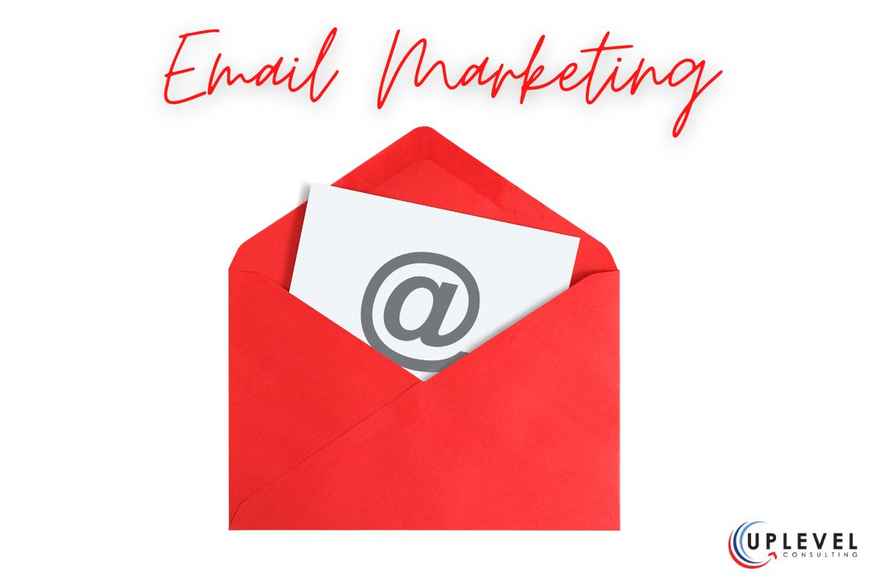Email Marketing for Business Growth (Plus Do's and Don'ts to Remember)

Make no mistake, email marketing is alive and well! Why? Because it's personal. It's from me, to you. And it's delivered straight into your very own mailbox... which half the time, is right in front of your face!
Whether it's effective (or not) is up to you. There are rules to the game, of course. And to do it well, it's best to follow some tried and true methods. But far be it from me, to tell you not to break some of the rules! However, as my middle school English teacher used to say, it's only good to break the rules once you've first mastered them.
5 Reasons Why Email Marketing is Still Powerful
-
Direct Communication: As I mentioned, email provides a direct and personal way to talk to your ideal client prospects (aka target audience).
-
High ROI: Email marketing often has a high return on investment (ROI) compared to other marketing channels. If you have a niche audience who wants to hear from you, then when you make them an offer the likelihood that they'll take action on it is rather high, compared to a wide and general audience.
-
Targeted Messaging: Segmenting your email list allows you to be highly relevant when choosing content or offerings to share.
-
Automation: Automated workflows save time and ensure timely communication, such as welcome emails, follow-ups and a series of emails to nurture and educate along a path before sharing an "ask" or offer.
-
Data and Analytics: Email platforms provide valuable insights into user behavior, helping you refine your marketing strategies.
Now that we know why we should focus on email marketing, how should we go about it?
How to be Strategic with Email Marketing
As with any type of marketing, to be effective you need a good strategy. Here are some key points to keep in mind when it comes to email marketing.
-
Personalize Your Email Campaigns:
- Tailor your emails based on customer preferences, behavior or past purchases. Data is there so we may as well use it. Personalization can significantly increase engagement and conversion rates.
- Tailor your emails based on customer preferences, behavior or past purchases. Data is there so we may as well use it. Personalization can significantly increase engagement and conversion rates.
-
Segmentation and Targeting:
- Divide your email list into segments based on demographics, behavior or other criteria. Many platforms have tagging for this reason. Send targeted messages to specific segments to maximize relevance. If I know it's truly for me and addresses my needs and struggles, I'm more likely to trust whoever sent it to me.
- Divide your email list into segments based on demographics, behavior or other criteria. Many platforms have tagging for this reason. Send targeted messages to specific segments to maximize relevance. If I know it's truly for me and addresses my needs and struggles, I'm more likely to trust whoever sent it to me.
-
Drip Campaigns:
- Implement automated drip campaigns to nurture leads over time. You need to stay in front of them. This involves sending a series of pre-scheduled emails that gradually guide people through the sales process or "funnel."
- Implement automated drip campaigns to nurture leads over time. You need to stay in front of them. This involves sending a series of pre-scheduled emails that gradually guide people through the sales process or "funnel."
-
Interactive Content:
- Embed interactive elements such as surveys, polls or quizzes within your emails. This not only engages the people on your email list but also provides valuable data for you to use in the future.
- Embed interactive elements such as surveys, polls or quizzes within your emails. This not only engages the people on your email list but also provides valuable data for you to use in the future.
-
Limited-Time Offers and Exclusivity:
- Create a sense of urgency by including limited-time offers or exclusive deals in your emails. Encourage subscribers to take immediate action.
- Create a sense of urgency by including limited-time offers or exclusive deals in your emails. Encourage subscribers to take immediate action.
-
User-Generated Content (UGC):
- Encourage customers to share their experiences with your products or services and feature this UGC in your emails. This adds authenticity to your brand. Think about the UGC reviews submitted on Amazon. Have you found those helpful? I know I have!
- Encourage customers to share their experiences with your products or services and feature this UGC in your emails. This adds authenticity to your brand. Think about the UGC reviews submitted on Amazon. Have you found those helpful? I know I have!
-
Abandoned Cart Emails:
- Send automated emails to users who have abandoned their shopping carts, reminding them of the items and offering incentives to complete the purchase. As a consumer, I must admit this has worked on me before.
- Send automated emails to users who have abandoned their shopping carts, reminding them of the items and offering incentives to complete the purchase. As a consumer, I must admit this has worked on me before.
-
Announcements and Sneak Peeks:
- Share exciting news, product launches or sneak peeks with your email subscribers before making the information public. This makes them feel special by getting a behind-the-scenes look.
- Share exciting news, product launches or sneak peeks with your email subscribers before making the information public. This makes them feel special by getting a behind-the-scenes look.
-
Referral Programs:
- Use email marketing to promote referral programs. Incentivize subscribers to refer friends, which will help you expand your customer base.
- Use email marketing to promote referral programs. Incentivize subscribers to refer friends, which will help you expand your customer base.
-
Storytelling and Brand Narrative:
- Craft compelling narratives (aka stories) related to your brand. Storytelling can evoke emotions and create a stronger connection with your audience. A good story can actually motivate people to change their behavior. One form of this is spending more money!
- Craft compelling narratives (aka stories) related to your brand. Storytelling can evoke emotions and create a stronger connection with your audience. A good story can actually motivate people to change their behavior. One form of this is spending more money!
Statistics on Effective Email Marketing:
While stats can vary by industry, here are a few highlights to consider across the board:
- Email marketing is reported to be 40 times more effective at acquiring customers than Facebook or Twitter (McKinsey).
- According to a study by HubSpot, the average email open rate across industries is around 20%.
- Click-through rates (CTR) vary by industry too but is generally around 2-3%.
- Personalized emails can deliver six times higher transaction rates (Experian).
Email Marketing Do's and Don'ts:
Do's:
-
Personalize Content: I said it before and I'll say it again. Tailor your emails to individual preferences and behaviors.
-
Optimize for Mobile: Ensure emails are mobile-friendly so they are easy to read.
-
A/B Testing: Experiment with subject lines, content and timing to identify what resonates best with your audience.
-
Clear Call-to-Action (CTA): Clearly state the desired action and make it easy for recipients to take that action. Some think that asking for a sale is to "salesy" but I disagree. If there's no ask, I'm left wondering: "now what?" And that's just frustrating. Be transparent. Let them know where you are coming from
-
Segmentation: Segment your email list for more targeted and relevant campaigns.
Don'ts:
-
Neglect Mobile Optimization: Ignoring mobile can lead to a poor user experience. And when that happens, you get dropped.
-
Overwhelm with Frequency: Avoid overwhelming subscribers with too many emails. Find the right balance based on your audience. Some will say that there is no "right" frequency and you can never overdo email. It seems this point is very specific to your brand and business.
-
Generic Content: Generic or irrelevant content can lead to disengagement. Personalization is powerful and valuable. Email platforms now punish you for low engagement. You don't want to be considered spam and being generic with low interaction is now considered the criteria!
-
Buy Email Lists: Avoid purchasing email lists, as these recipients haven't opted in and may mark your emails as spam. This is one of those rules that may have changed over the years. It's all about how you execute.
-
Ignore Analytics: Regularly analyze email performance and adjust your strategy based on insights.
By leveraging the power of personalization, segmentation and targeted campaigns, businesses can use email marketing not only to retain existing customers but also to attract new ones, ultimately contributing to sustainable business growth.
If you want to dive into email marketing and do it effectively let's have a chat. Reach out today on the contact page.

0 comments
Leave a comment
Please log in or register to post a comment